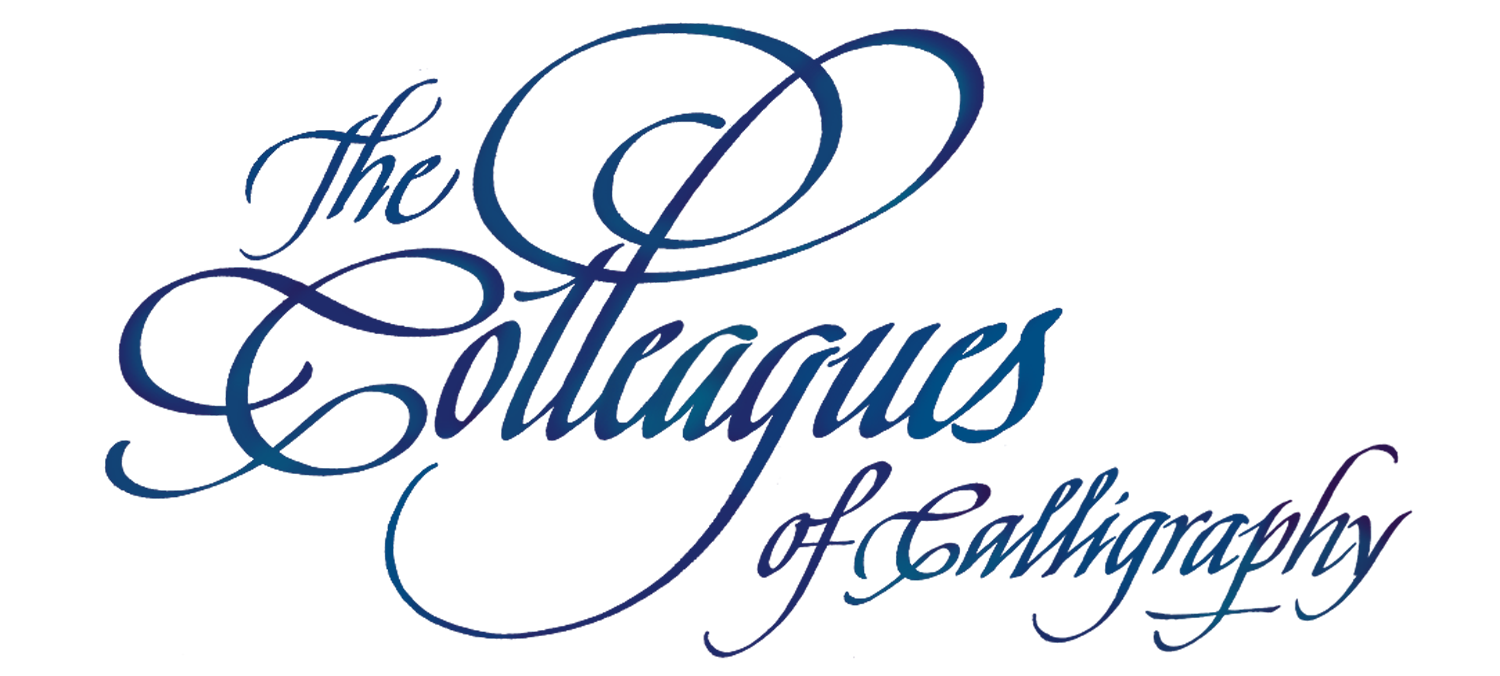An aesthetic partnership has always existed between strong letterforms and strong stone. One is essential to the other with quality design requiring equally worthy limestone, slate, marble or granite. The naming of the Janey Westin – Charlie Hughes collaborative studio, Paper & Stone was no accident. Janey made it clear. First comes the paper, and then the stone.
She reminded her audience that the ancient Romans had ready access to brushes and papyrus, upon which they likely made their preliminary designs for incised stone work. Roman inscriptional pieces were usually completed with the application of brightly colored pigments painted on the incised letters.
For today’s calligraphers, Rome’s Trajan column of 114 AD has been the go-to example of strong letterforms in stone. Janey recalled the work of Father Edward Catich who tirelessly disseminated his conclusion that the edged brush came first, followed by the chisel in Roman inscriptional stones. Catich saw the Trajan column in person and traveled back to Iowa with large rolls of paper, each carrying his own rubbings of the Trajan inscription with its monumental 6.5 inch-high capitals. He went on to cast a fiberglass replica of the piece so that his students could study a 3-D version.
Anyone who takes a close look at the inscription discovers several things. Duplicate letters are not exactly alike. Some lines of letters are shorter or taller than others. Some lines have more letters than others. Those having more letters have a somewhat shorter letter height and closer spacing. Janey thinks that the variety of heights and spacing has to do with fitting the text to the available surface area. Its inscription was planned and executed by a very accomplished calligrapher/carver.
The Trajan column and other examples of fine inscriptional letters have inspired Janey and Charlie’s contemporary work for worship centers, colleges, universities, libraries, corporations and private commissions all around the country.
Janey works with a variety of stone surfaces, first creating design elements on paper, then transferring them to the stone. The carving stage comes next, followed by painting or gilding various parts of the carved design. Sometimes the finished carving stands alone without paint or gold. Some pieces have incised lettering carved INTO the stone. Others have RAISED elements where all excess stone around the letter or design is carved away, causing the design to “rise” up from the main surface. Raised design requires much more time and labor than with the incised technique.
Janey’s work is representative of a multitude of letterforms including Runic signs and Hebrew lettering.
“As you remove stone it reveals what should happen next,” she says. It is easy to imagine that all stone has had a “life”, having evolved from pressure, water and heat. It slowly changes as eons pass. In that sense, stone is alive, or at least contains a visual “log” of what has happened to it through the ages. It is the stone carver who discovers the past life of the stone, sometimes hearing a sharp “ping” while carving. The stone speaks, and suddenly the chisel moves in an unplanned direction, revealing a tiny imbedded pebble, older and harder than its host stone. It may be time for revised action on the part of the carver!
Janey Westin, outside her studio, with the work-in-progress “Bear and Bunny” sculpture for the Edina Library.
Carved letter design is only one aspect of Janey’s work in stone. She is a talented and prolific sculptor as well, at work on free-standing forms of all kinds — human, animal and plant life. All are brought into being, or rather, slowly emerge from an assortment of huge stone blocks which are periodically delivered to her studio. A heavy-duty lifting apparatus takes them from the flat-bed delivery truck into her high-ceilinged studio. One such current project sits there quietly amid an array of chisels, wood pallets, and spare stone pieces. It awaits the chisel each day, with more and more of it appearing as time passes. Fondly named “The Bear and Bunny Bench”, this huge piece of Indiana limestone is already resembling its much smaller clay model. In time, young library patrons at the Edina Library at 5280 Grandview Square in Edina, Minnesota will happily sit on it, joining its current stone occupants. At the end of the 7-foot bench sits a large amiable bear, leaning on a sturdy tree trunk. He holds a large open book. At his side sits a bunny, also reading a book. An interested frog has reserved space on the bear’s shoulder, probably just content to “look at the pictures”. The animal friends are probably not aware of a story-loving mouse, nearly hidden in the folds of tree bark. A potential mail box, fashioned by an actual hole in the tree trunk is perfectly sized to accommodate actual notes and letters, written by living children, later to be answered by a living, secret librarian! This wonder weighs upward of 3,300 lbs, now that the original block has parted with great quantities of itself. When everything is done, the menagerie will ride once again on a truck, destined for its final home at the library entrance.
We know that there are many lettering artists and calligraphers in current society. We are some of them! A very small percentage of us are also stone carvers. We are fortunate to be in such close proximity to such a one, our fellow Colleague, Janey Westin. We have been blessed to know Charlie Hughes as well. Both of them have generously shared, taught and inspired us to higher levels of accomplishment in our own artistic pursuits!
Also, check out Alex Glowka’s self-described “beveled stuff” that he shared when he manned the Demo Corner before the program:











